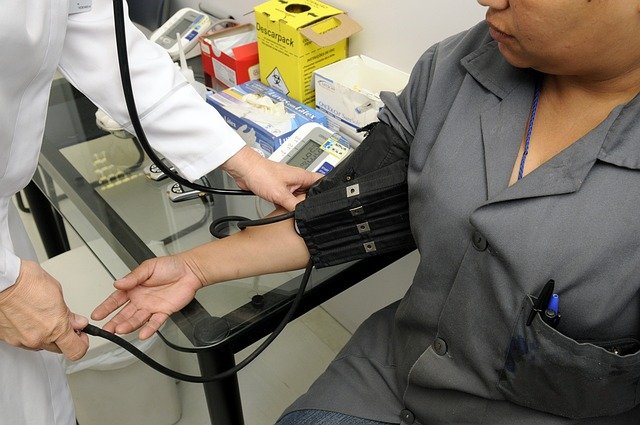Leg Blood Clots: Symptoms, Causes, and When to Seek Help
Blood clots in the legs, also known as deep vein thrombosis (DVT), are a serious medical condition that can have potentially life-threatening consequences if left untreated. These clots typically form in the deep veins of the legs and can cause pain, swelling, and other symptoms. Understanding the signs, causes, and when to seek medical attention is crucial for early detection and proper management of leg blood clots. This article will provide a comprehensive overview of leg blood clots, including their symptoms, risk factors, and treatment options.

What are the common symptoms of leg blood clots?
Recognizing the symptoms of leg blood clots is essential for prompt diagnosis and treatment. While some individuals may experience no symptoms at all, others may notice:
-
Swelling in one or both legs
-
Pain or tenderness in the affected leg, often described as a cramping or soreness
-
Warm skin in the area of the clot
-
Redness or discoloration of the skin
-
Visible surface veins
It’s important to note that these symptoms can also be associated with other conditions, so a proper medical evaluation is necessary for an accurate diagnosis.
What are the primary causes and risk factors for leg blood clots?
Understanding the causes and risk factors for leg blood clots can help individuals take preventive measures and identify their personal risk. Some common causes and risk factors include:
-
Prolonged immobility, such as during long flights or bed rest
-
Recent surgery or injury to the legs
-
Obesity
-
Smoking
-
Pregnancy and postpartum period
-
Hormonal birth control or hormone replacement therapy
-
Advanced age (over 60 years old)
-
Family history of blood clots
-
Certain medical conditions, such as cancer or heart disease
Being aware of these risk factors can help individuals and healthcare providers take appropriate precautions and implement preventive strategies when necessary.
How are leg blood clots diagnosed and detected?
When a leg blood clot is suspected, healthcare providers employ various diagnostic methods to confirm the presence of a clot and determine its extent. The diagnostic process typically involves:
-
Physical examination: The doctor will check for swelling, tenderness, and discoloration in the affected leg.
-
Medical history review: The healthcare provider will ask about symptoms, risk factors, and any recent events that may have contributed to clot formation.
-
Imaging tests:
-
Ultrasound: This non-invasive test uses sound waves to create images of blood flow in the veins.
-
CT scan or MRI: These advanced imaging techniques may be used to detect clots in deeper veins or to rule out other conditions.
-
-
Blood tests: Certain blood tests can help determine if there’s an increased tendency for blood clotting.
Early detection is crucial for effective treatment and prevention of complications, so it’s important to seek medical attention if you suspect a leg blood clot.
What is the link between leg pain and blood clots?
While not all leg pain is indicative of a blood clot, understanding the connection between the two is important for recognizing potential warning signs. Leg pain associated with blood clots typically:
-
Occurs in one leg (though it can affect both)
-
Feels like a cramping or soreness, often in the calf
-
May be accompanied by swelling, warmth, and redness
-
Worsens over time rather than improving with rest
It’s crucial to differentiate between general muscle soreness and pain that could signify a blood clot. If you experience persistent, unexplained leg pain, especially if accompanied by other symptoms, it’s advisable to consult a healthcare professional.
When should you seek medical help for suspected leg blood clots?
Knowing when to seek medical attention is critical when dealing with potential leg blood clots. You should consult a healthcare provider immediately if you experience:
-
Sudden swelling in one or both legs
-
Unexplained leg pain or tenderness
-
Warm, red, or discolored skin on the leg
-
Difficulty breathing or chest pain (which could indicate a pulmonary embolism, a serious complication of DVT)
Early intervention can prevent the clot from growing or breaking off and traveling to the lungs, which can be life-threatening. Don’t hesitate to seek emergency care if you suspect a blood clot, especially if you have known risk factors or have recently been in a situation that increases your risk (such as long-distance travel or surgery).
In conclusion, understanding leg blood clots is crucial for early detection and proper management. By familiarizing yourself with the symptoms, causes, and risk factors, you can take proactive steps to protect your health. Remember that while leg pain and swelling can have various causes, it’s always better to err on the side of caution and seek medical advice if you’re concerned about the possibility of a blood clot. Prompt diagnosis and treatment can significantly improve outcomes and prevent potentially serious complications.
This article is for informational purposes only and should not be considered medical advice. Please consult a qualified healthcare professional for personalized guidance and treatment.




